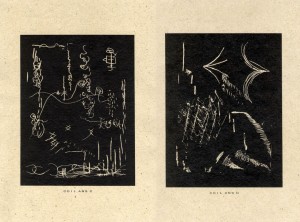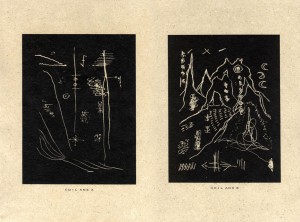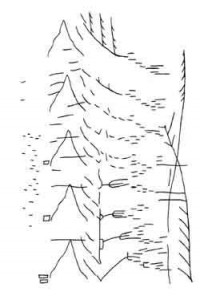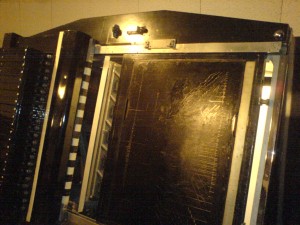ANS synthesizer lets you draw the music
Source: http://boingboing.net/2012/06/27/synth.html
You don't play the ANS synthesizer with a keyboard. Instead you etch images onto glass sheets covered in black putty and feed them into a machine that shines light through the etchings, trigging a wide range of tones. Etchings made low on the sheets make low tones. High etchings make high tones. The sound is generated in real-time and the tempo depends on how fast you insert the sheets.
A nearly forgotten Russian synthesizer designed by Evgeny Murzin in 1938, the synth was named after and dedicated to the Russian experimental composer and occultist Alexander Nikolayevich Scriabin (1872–1915).
The political tides turned against the Russian avant garde by the time Murzin began working on the ANS in 1938. As Isobel Clouter explains in an episode of the BBC radio show The Soundhunter, most early sound art projects were destroyed. Engineers were forced to work on art projects in secret and had little access to parts. These conditions slowed down the development of the ANS. According to Stanislav Kreichi, Murzin's assistent and only surviving operator of the ANS, Murzin didn't have access to a lab in which to complete the ANS until 1958. The delayed completion may have saved it from the fate of the other avant garde sound art machines. Yet according to Smirnov and Pchelkina it was the last Russian sound art creation not based on Western prototypes. The future of electronic music would belong to Western and Japanese companies, not Russia.
The ANS went on to be used in the soundtrack for the Andrei Tarkovsky film Solaris in 1972, but today it sits behind a rope at the Glinka Museum of Musical Culture. A few artists have recorded albums with it over the years, mostly notably the late occultists/electronic musicians Coil who traveled to Russia in 2002 to record their album ANS and the follow-up COILANS. Because, according to the liner notes, the band had only a three days to work with the machine, they opted to etch their own signals onto sheets and convert these into sound rather than try to deliberately compose works.
Source: http://boingboing.net/2012/06/27/synth.html
RECENT POSTS
- Adding Background Music to Puzzlescript Games
- Baby Zombie Chicken Jockey Java Minecraft Mod
- Raining Chickens Java Minecraft Mod
- Spawn a Pet Wolf Java Minecraft Mod
- Spigot Server for Java Minecraft Mods
- Python Classes to Javascript Classes
- JUnit Tests with Repl.it Teams for Education
- Canvas How to convert an old Quiz Question Bank to a new Quiz Item Bank
- Node Twitterbot Directions
- FogeyBot Thinks Twitter is the Worst
- Detecting Sentence Structure with Regex
- Game-based Learning Presentation
- Hello Jekyll
- Testing 123
- Grading Multi-Select Questions with Google Forms and Google Sheets
- Puzzlescript Rules
- Using Makey Makey to Teach Electricity
- Makey Makey + Scratch Video Game Projects
- Orbit Simulator
- Market game
- TwineFray: A Battle System for Twine
- Sundown
- Twine Games by Middle School Students
- Twine CSS
- Twine Music and Sound Effects from YouTube
- Twine Pictures, GIFs, and Background Images
- Twine Random Numbers
- Tutorial videos for Spreadsheet Functions and Formulas
- How to Program Twitterbots as an Intro to Computer Science
- Podcast Recommendations
- Coding Twitterbots with Middle School Students
- Educational Games on The Internet Archive
- Typing Games in Scratch
- Scratch Tutorial Videos
- Editing videos with Windows Movie Maker
- How to use iMovie for iPad
- Quick and easy DIY pressure plate switch for Makey Makey and Scratch
- Webcam Motion Pixel Art
- Flipped Classroom Scratch Programming Lessons
- BYOD Music Class Using OhioFi Games
- 3 Methods for Going Paperless in the Classroom
- Dodgeball Cat
- How to Automatically Republish a Google Forms Spreadsheet
- The Funeral, a comedy...? by Jon Kovach
- Polaroid cameras that use Fuji Packfilm
- How to Use Google Drive to Store High Scores for Twine Games
- Twine scripts and macros
- Twine style
- Twine logic
- Twine variables



